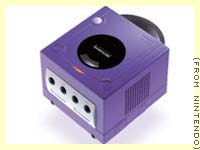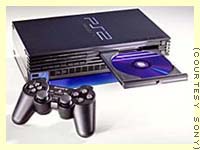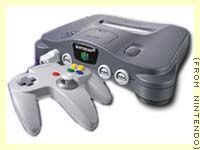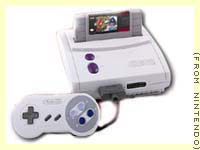APF were a major distributor of calculators, before entering the g@mes console market. The machine was really more of a computer- although still played games, boasting 9k RAM, with 14k BASIC in ROM and a 53-key typewriter. It would generate a fine resolution pictuyre either on your television set or monitor (in eight colours.) It had two built in, game style controllers with joysticks and numeric keypads.
Imagination Machine is programmable in BASIC and 6800 machine language. The Imagination
Machine is also expandable. Just add our
"Building Block", an optional, four-port
expansion device, and you can hook up a
printer, telephone modem, and additional
memory cartridge or mini-floppy disk drive.
The machine had some very good pluses
· The
g@mes were surprisingly good, in cassette and cartridge form.
· Each of the two controllers had there own numeric keypads.
· The built in cassette recorder (used to load and save
g@mes) would have two channels, one for loading the game and the other for recording/playing your own voice. This was a unique feature and very fun too.
The APF Imagination Machine could be purchased as a single unit for $599USD, or you could purchase the console ($130) and the MPA-10 module ($499) separately.
Radofin-Video Systems Family also known as 1292
The 1292 Advanced Programmable Video System was first created in 1976 by a company called Radofin. Radofin then licensed the technology to other companies throughout the United Kingdom. Acetronic, Prinztronic, Fountain, Grandstand, Audiosonic, Hanimex and Lansay, each made consoles based on Radolfin's design for different parts of the world. Some of these variations were identical to the 1292 Advanced Programmable Video System, but sported different labels based on the maker. Other companies altered the original external design completely.
The Interton VC-4000 was also released in Europe. The overall design and specs are similar to the 1292 Radolfin family, but it is unclear whether this unit was licenced by Radolfin or developed before. The console was supposedly developed by Interton in 1974, but released in 1978. Both Interton and Radofin were German based companies.
All the systems used 32-pin cartridges, and 2 controllers (which are hard-wired to the system). These controllers had 12 buttons and a 2-axis analogue control. The pack-in games that came with most systems were Olympics and Invaders. It was possible to play carts on the various models with or without use of an adaptor. The numerous models also produced a large library of games.
Because of the similar architecture, it was believed that 1292 games could be played on the Emerson Arcadia with modifications. However thanks to hardware gurus and emulation it has been proven that it cannot be done.




















